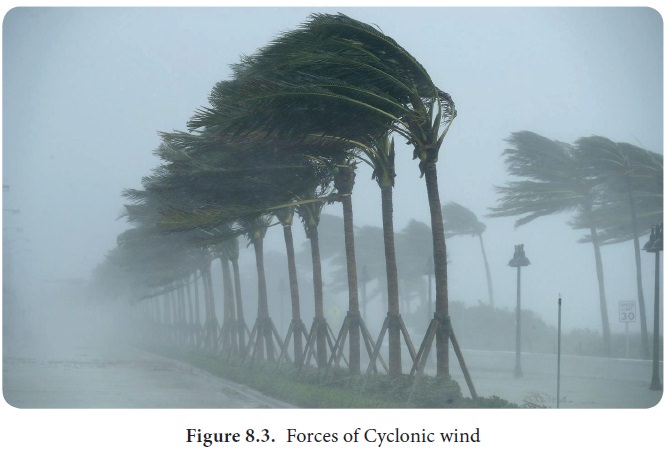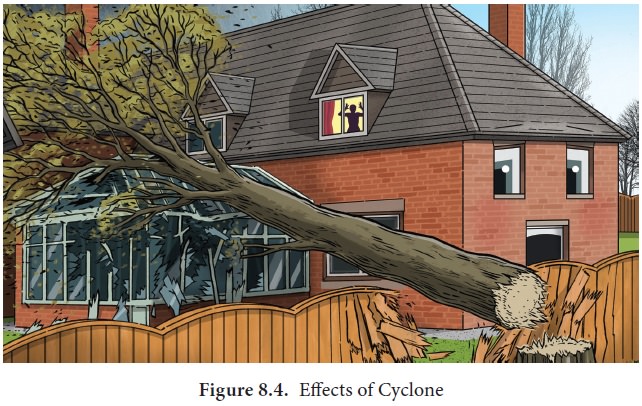Chapter: 11th Geography : Chapter 8 : Natural Disasters - Public Awareness For Disaster Risk Reduction
Cyclone - Disaster and Rules of actions during disasters
Cyclone
The major natural disaster that
affects the coastal regions of India is cyclone and as India has a coastline of
about 7516 km; it is exposed to nearly 10 percent of the world’s tropical
cyclones.
About 71 percent of flood prone areas
are in ten states (Gujarat, Maharashtra, Goa, Karnataka, Kerala, Tamil Nadu,
Pondicherry, Andhra Pradesh, Orissa and West Bengal). The islands of Andaman,
Nicobar and Lakshadweep are also prone to cyclones.
Districts
in Tamil Nadu which are frequently affected by cyclones: All the 13 coastal Districts of Tamil Nadu are affected by
cyclonic storms which occur during May-June and in October-November months.
These Districts are: Tiruvallur, Chennai, Kancheepuram, Villupuram, Cuddalore,
Nagapattinam, Tiruvarur, Thanjavur, Pudukkottai, Ramanathapuram, Tuticorin,
Tirunelveli and Kanniyakumari.
On an average, about five or six
tropical cyclones form in the Bay of Bengal and Arabian sea and hit the coast
every year. Out of these, two or three are severe.
When a cyclone approaches to the coast, a risk of serious loss or damage occurs from severe winds, heavy rainfall, storm surges and river floods. The effect of a storm surge is most pronounced in wide and shallow bays exposed to cyclones such as in the northern part of Bay of Bengal. Most cyclones occur in the Bay of Bengal followed by those in the Arabian Sea and the ratio is approximately 4:1. During the cyclonic of cyclonic storms, wind speed is between 65 km/h and117 km/h.

Rules of action before a cyclone
a.
Go to high-lying places from low-lying areas
b.
Those residing in old buildings should temporarily relocate to safer
buildings; Jewels and documents should be kept in safe custody.
c.
Battery-operated radio, plastic torch-light, lamp, kerosene, match-box
should be kept safely for future use.
d.
Keep in ready all the first-aid kit and material available with you.
e.
Keep in stock foodstuffs, material, fuel, drinking water and life-saving
drugs needed for the next week.
f.
It is also important to take cattle and other pets to safer places.
g.
It is important to know that if we see quickly approaching storm clouds
it is possible to predict strong winds several minutes in advance.

During a cyclone
a.
If you are in a building during a strong gust, it is necessary to close
and fasten windows and doors. It is better to stay in the rooms.
b.
Turn off all electrical devices.
c.
Protect yourself with your hands or a scarf. Protect the eyes, nose and
mouth from dust.
d.
If you are in a wildlife area, try to find a place protected from the
wind. If there is no such place nearby, lie down on the ground.
e.
If you are in a car it is better to stay there and close the windows. Do
not park the car under unstable objects that can break down and fall on the
car.
After cyclone
a.
Turn off electricity, gas and water and unplug all electric appliances.
b.
Beware of snakes and other animals immediately after the cyclone.
c.
Do not go for sightseeing.
d.
Stay away from damaged power lines, falling trees and flood water.
e.
Boil and purify water before drinking.
Related Topics